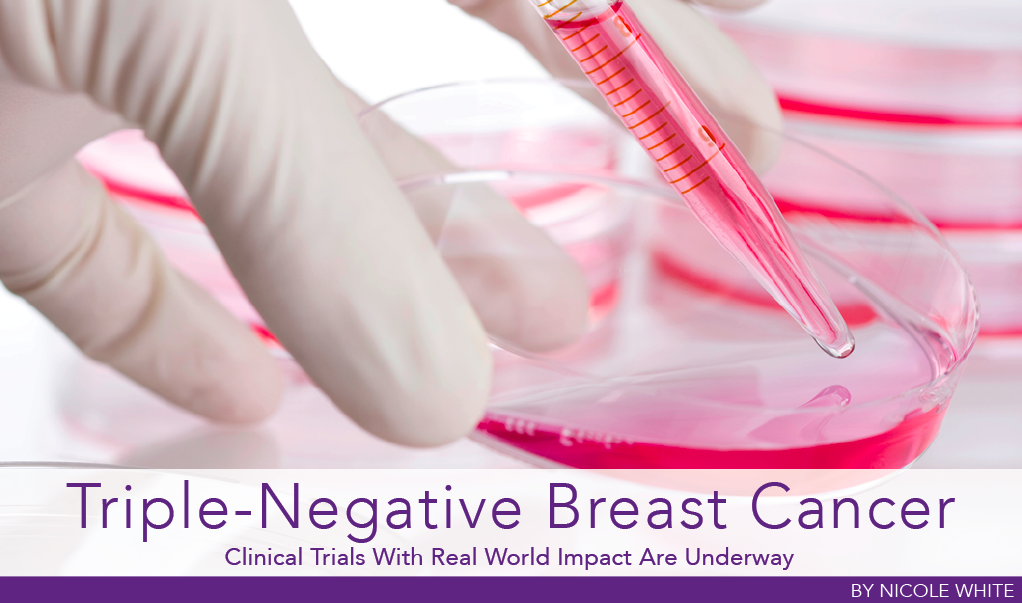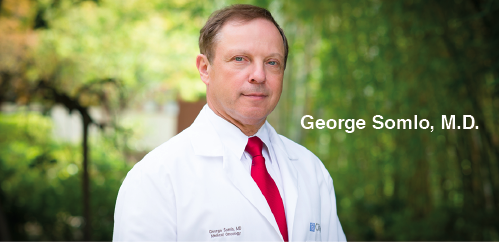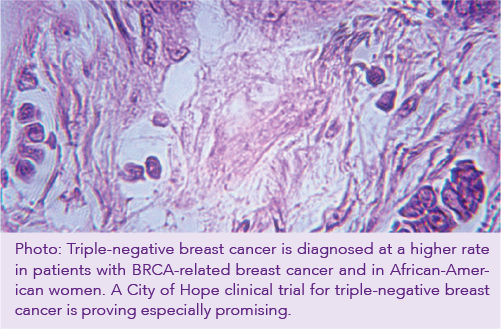
When Homa Sadat found a lump in her breast at age 27, her gynecologist told her she was too young to have breast cancer.
With the lump dismissed as a harmless cyst, Sadat didn’t think about it again until she felt a shooting pain. A biopsy of the lump confirmed breast cancer; a biopsy of a lymph node confirmed that the cancer had spread. Sadat was diagnosed with triple-negative breast cancer.
Pathologists who test breast cancer cells look for the presence of estrogen and progesterone hormone receptors and the overexpression of receptors for a type of protein called HER2. Breast cancer that is positive for one of the hormone receptors can be targeted with a tamoxifen or an aromatase inhibitor. Trastuzumab (Herceptin) and its newer versions are used to target HER2-positive breast cancers.
But breast cancers that are negative for all three receptors have no targets for these drugs, making them very difficult to treat. Fortunately, triple-negative breast cancer is rare — affecting approximately 15 percent of all women with breast cancer. It is diagnosed at a higher rate in patients with hereditary breast cancer associated with the BRCA1 gene, as well as in African-American women.
 City of Hope researchers are fighting back by studying these cancers, in hopes of discovering more effective treatments.
City of Hope researchers are fighting back by studying these cancers, in hopes of discovering more effective treatments.
“We offer several innovative clinical trials for newly diagnosed and Stage 4 triple-negative breast cancer patients that are part of a national effort to address these difficult-to-treat tumors,” says George Somlo, M.D., professor in the departments of Medical Oncology & Therapeutics Research and Hematology & Hematopoietic Cell Transplantation at City of Hope.
One such trial for newly diagnosed patients is evaluating the effect of destroying cancer cells with chemotherapy before patients have surgery. “Once the tumor is completely eliminated, or at least reduced in size, surgery follows. Patients with newly diagnosed triple-negative breast cancer who do not experience a recurrence within five years are likely cured,” says Somlo.
Sadat initially sought treatment at another center and came to City of Hope for a second opinion from Somlo. She enrolled in a City of Hope phase II clinical trial that offered chemotherapy prior to surgery and was treated with carboplatin and a novel nanoparticle drug called nab–paclitaxel (Abraxane).
After eight weeks on the chemotherapy regimen, the tumor had shrunk significantly. Sadat volunteered for a biopsy, and to her surprise, the tumor was gone.
Ongoing research, ongoing advances
Another eight weeks later, Sadat underwent surgery at City of Hope to remove the area of breast tissue that had contained the tumor, as well as several lymph nodes. No cancer cells were found in these tissues. Her cancer was in complete remission.
Somlo is close to completing this particular clinical trial, as well as a randomized, phase II, national study assessing the role of carboplatin and the PARP-inhibitor veliparib in patients with Stage 4 BRCA1- and BRCA2-associated breast cancer.
 “We are learning that triple-negative breast cancer consists of at least a half-dozen subtypes, each of which may require personalized therapies,” says Somlo.
“We are learning that triple-negative breast cancer consists of at least a half-dozen subtypes, each of which may require personalized therapies,” says Somlo.
“We must intensify our current laboratory and translational research to improve next- generation clinical trials for much better control and eventual cure of triple-negative Stage 4 metastatic breast cancers. The next generation of trials will need to be more tumor-target specific, so we can help individual patients overcome their particular subtype of triple-negative breast cancer,” he adds.
Research reported in this study was supported in part by the National Cancer Institute of the National Institutes of Health under grant number NIH-NCI CA 33572. The content is solely the responsibility of the authors and does not necessarily represent the official views of the National Institutes of Health.

 Login
Login
















